Date 2012
Event ID 993535
Category Recording
Type Excavation
Permalink http://canmore.org.uk/event/993535
NF 81625 60285 Teampull na Trionaid (Trinity Church) is a medieval monastery and college founded and built in the 14th century and reconstructed in the 16th century. The chapel is reputed to have been enlarged in the late 14th century and remained in use until the early 18th century. The burial ground is enclosed by a curvilinear 18th-century wall. Repairs to the building were carried out in the 19th and 20th centuries.
A topographical and standing building survey, a watching brief during the removal of fallen masonry, and the excavation of three trial trenches, were carried out June – July 2011 in association with a wider programme of conservation work.
A Level 3 standing building survey established that the structural remains consist of two chapels. A large rectangular structure aligned E–W, with a smaller rectangular chapel on its N side. The two chapels are c1.5m apart and connected by a barrel-vaulted passage which is bonded to both buildings. On the S side of the main chapel there is an adjoining structure, known locally as the enclosure, which was constructed in the 18th century. The buildings were laser scanned and elevation drawings and a photographic record produced.
The topographic survey established that the church is located on the 11m OD contour and ground levels are higher inside the church and chapel, reflecting the impact of over 700 years of interments. All of the graves were aligned N–S. Scaled drawings were produced of the complex in relation to the graveyard boundary wall and 5m beyond the wall. An examination of late 19th-century photographs indicates that the site has deteriorated considerably due to stone robbing and continued erosion by the elements, despite stabilisation work carried out in 1994–5.
The watching brief led to the recovery of 42 pieces of moulded stone. A human skull was also recovered and retained for future reburial. Two of the trial trenches (Trenches 1 and 3) excavated next to the main church building identified good quality wall foundations suitable for the intended stabilisation works. Trench 2 excavated next to the S wall of the enclosure on the S side of the main church identified poor quality foundation walls, which had sunk into soft ground, causing the outward collapse of the wall. The excavation of Trench 2 was terminated on the discovery of articulated human skeletons.
The finds recovered were mainly of 19th-century date or a mix of animal and human bone. Apart from 23 fragments, all human remains were either left in situ or reburied in Trench 2. A small group of sherds of probable Middle Iron Age pottery were also recovered. The location of the site on a small natural knoll with good views over the surrounding landscape would have represented an ideal site for early settlement. It is considered probable that the remains of Iron Age settlement are preserved somewhere in the immediate vicinity, although they are very likely to have been significantly disturbed by the later activity.
Archive: CNES SMR and RCAHMS
Funder: Teampull na Trionaid Conservation Trust
Magnus Kirby, CFA Archaeology Ltd
2012
Ordnance Survey licence number AC0000807262. All rights reserved.
Canmore Disclaimer.
© Copyright and database right 2024.
|
North Uist, Carinish, Teampull Na Trionaid
Burial Ground (Medieval), Church (14th Century), House (16th Century)
Canmore ID 10265 |
|

DP 320454
Historic building survey, Enclosure wall, E-facing elevation, Teampull na Trionaid, Cairinis, North Uist, Western Isles
Records of CFA Archaeology Ltd, archaeologists, Musselburgh, East Lothian, Scotland
14/6/2011
© CFA Archaeology Ltd

DP 320455
Historic building survey, Enclosure wall, E-facing elevation, Teampull na Trionaid, Cairinis, North Uist, Western Isles
Records of CFA Archaeology Ltd, archaeologists, Musselburgh, East Lothian, Scotland
14/6/2011
© CFA Archaeology Ltd

DP 320456
Historic building survey, Church, S-facing elevation, Teampull na Trionaid, Cairinis, North Uist, Western Isles
Records of CFA Archaeology Ltd, archaeologists, Musselburgh, East Lothian, Scotland
14/6/2011
© CFA Archaeology Ltd

DP 320457
Historic building survey, Church, S-facing elevation, Teampull na Trionaid, Cairinis, North Uist, Western Isles
Records of CFA Archaeology Ltd, archaeologists, Musselburgh, East Lothian, Scotland
14/6/2011
© CFA Archaeology Ltd

DP 320458
Historic building survey, Church, S-facing elevation, Teampull na Trionaid, Cairinis, North Uist, Western Isles
Records of CFA Archaeology Ltd, archaeologists, Musselburgh, East Lothian, Scotland
14/6/2011
© CFA Archaeology Ltd

DP 320459
Historic building survey, Church, S-facing elevation, Teampull na Trionaid, Cairinis, North Uist, Western Isles
Records of CFA Archaeology Ltd, archaeologists, Musselburgh, East Lothian, Scotland
14/6/2011
© CFA Archaeology Ltd

DP 320460
Historic building survey, Church, S-facing elevation, Teampull na Trionaid, Cairinis, North Uist, Western Isles
Records of CFA Archaeology Ltd, archaeologists, Musselburgh, East Lothian, Scotland
14/6/2011
© CFA Archaeology Ltd

DP 320461
Historic building survey, Enclosure doorway, E-facing elevation, Teampull na Trionaid, Cairinis, North Uist, Western Isles
Records of CFA Archaeology Ltd, archaeologists, Musselburgh, East Lothian, Scotland
14/6/2011
© CFA Archaeology Ltd

DP 320462
Historic building survey, Church interior, E-facing elevation, Teampull na Trionaid, Cairinis, North Uist, Western Isles
Records of CFA Archaeology Ltd, archaeologists, Musselburgh, East Lothian, Scotland
14/6/2011
© CFA Archaeology Ltd

DP 320463
Historic building survey, Church interior, E-facing elevation, Teampull na Trionaid, Cairinis, North Uist, Western Isles
Records of CFA Archaeology Ltd, archaeologists, Musselburgh, East Lothian, Scotland
14/6/2011
© CFA Archaeology Ltd

DP 320464
Historic building survey, Church interior, consecutive shots, S-facing elevation, Teampull na Trionaid, Cairinis, North Uist, Western Isles
Records of CFA Archaeology Ltd, archaeologists, Musselburgh, East Lothian, Scotland
14/6/2011
© CFA Archaeology Ltd

DP 320465
Historic building survey, Church interior, consecutive shots, S-facing elevation, Teampull na Trionaid, Cairinis, North Uist, Western Isles
Records of CFA Archaeology Ltd, archaeologists, Musselburgh, East Lothian, Scotland
14/6/2011
© CFA Archaeology Ltd

DP 320466
Historic building survey, Church interior, consecutive shots, S-facing elevation, Teampull na Trionaid, Cairinis, North Uist, Western Isles
Records of CFA Archaeology Ltd, archaeologists, Musselburgh, East Lothian, Scotland
14/6/2011
© CFA Archaeology Ltd

DP 320467
Historic building survey, Church interior, consecutive shots, S-facing elevation, Teampull na Trionaid, Cairinis, North Uist, Western Isles
Records of CFA Archaeology Ltd, archaeologists, Musselburgh, East Lothian, Scotland
14/6/2011
© CFA Archaeology Ltd

DP 320468
Historic building survey, Church interior, consecutive shots, S-facing elevation, Teampull na Trionaid, Cairinis, North Uist, Western Isles
Records of CFA Archaeology Ltd, archaeologists, Musselburgh, East Lothian, Scotland
14/6/2011
© CFA Archaeology Ltd

DP 320469
Historic building survey, Church interior, consecutive shots, S-facing elevation, Teampull na Trionaid, Cairinis, North Uist, Western Isles
Records of CFA Archaeology Ltd, archaeologists, Musselburgh, East Lothian, Scotland
14/6/2011
© CFA Archaeology Ltd

DP 320470
Historic building survey, Church interior, remains of the ruined S-facing elevation, Teampull na Trionaid, Cairinis, North Uist, Western Isles
Records of CFA Archaeology Ltd, archaeologists, Musselburgh, East Lothian, Scotland
14/6/2011
© CFA Archaeology Ltd

DP 320471
Historic building survey, Church exterior E-facing elevation (gable wall), Teampull na Trionaid, Cairinis, North Uist, Western Isles
Records of CFA Archaeology Ltd, archaeologists, Musselburgh, East Lothian, Scotland
14/6/2011
© CFA Archaeology Ltd

DP 320472
Historic building survey, Church exterior E-facing elevation (gable wall), Teampull na Trionaid, Cairinis, North Uist, Western Isles
Records of CFA Archaeology Ltd, archaeologists, Musselburgh, East Lothian, Scotland
14/6/2011
© CFA Archaeology Ltd

DP 320473
Historic building survey, Church exterior E-facing elevation (gable wall), Teampull na Trionaid, Cairinis, North Uist, Western Isles
Records of CFA Archaeology Ltd, archaeologists, Musselburgh, East Lothian, Scotland
14/6/2011
© CFA Archaeology Ltd

DP 320474
Historic building survey, McVicar Chapel, exterior, E-facing gable, Teampull na Trionaid, Cairinis, North Uist, Western Isles
Records of CFA Archaeology Ltd, archaeologists, Musselburgh, East Lothian, Scotland
14/6/2011
© CFA Archaeology Ltd

DP 320475
Historic building survey, McVicar Chapel, exterior, E-facing gable, Teampull na Trionaid, Cairinis, North Uist, Western Isles
Records of CFA Archaeology Ltd, archaeologists, Musselburgh, East Lothian, Scotland
14/6/2011
© CFA Archaeology Ltd

DP 320476
Historic building survey, Interior E-facing wall of the McVicar passage, Teampull na Trionaid, Cairinis, North Uist, Western Isles
Records of CFA Archaeology Ltd, archaeologists, Musselburgh, East Lothian, Scotland
14/6/2011
© CFA Archaeology Ltd

DP 320477
Historic building survey, Interior E-facing wall of the McVicar passage, Teampull na Trionaid, Cairinis, North Uist, Western Isles
Records of CFA Archaeology Ltd, archaeologists, Musselburgh, East Lothian, Scotland
14/6/2011
© CFA Archaeology Ltd

DP 320478
Historic building survey, McVicar Chapel, interior, E-facing gable wall, Teampull na Trionaid, Cairinis, North Uist, Western Isles
Records of CFA Archaeology Ltd, archaeologists, Musselburgh, East Lothian, Scotland
14/6/2011
© CFA Archaeology Ltd

DP 320479
Historic building survey, McVicar Chapel, interior, N-facing wall, consecutive, Teampull na Trionaid, Cairinis, North Uist, Western Isles
Records of CFA Archaeology Ltd, archaeologists, Musselburgh, East Lothian, Scotland
14/6/2011
© CFA Archaeology Ltd

DP 320480
Historic building survey, McVicar Chapel, interior, N-facing wall, consecutive, Teampull na Trionaid, Cairinis, North Uist, Western Isles
Records of CFA Archaeology Ltd, archaeologists, Musselburgh, East Lothian, Scotland
14/6/2011
© CFA Archaeology Ltd

DP 320481
Historic building survey, McVicar Chapel, interior, N-facing wall, consecutive, Teampull na Trionaid, Cairinis, North Uist, Western Isles
Records of CFA Archaeology Ltd, archaeologists, Musselburgh, East Lothian, Scotland
14/6/2011
© CFA Archaeology Ltd

DP 320482
Historic building survey, McVicar Chapel, interior, N-facing wall, consecutive, Teampull na Trionaid, Cairinis, North Uist, Western Isles
Records of CFA Archaeology Ltd, archaeologists, Musselburgh, East Lothian, Scotland
14/6/2011
© CFA Archaeology Ltd

DP 320483
Historic building survey, McVicar Chapel, interior, S-facing wall, consecutive, Teampull na Trionaid, Cairinis, North Uist, Western Isles
Records of CFA Archaeology Ltd, archaeologists, Musselburgh, East Lothian, Scotland
14/6/2011
© CFA Archaeology Ltd

DP 320484
Historic building survey, McVicar Chapel, interior, S-facing wall, consecutive, Teampull na Trionaid, Cairinis, North Uist, Western Isles
Records of CFA Archaeology Ltd, archaeologists, Musselburgh, East Lothian, Scotland
14/6/2011
© CFA Archaeology Ltd

DP 320485
Historic building survey, McVicar Chapel, interior, S-facing wall, consecutive, Teampull na Trionaid, Cairinis, North Uist, Western Isles
Records of CFA Archaeology Ltd, archaeologists, Musselburgh, East Lothian, Scotland
14/6/2011
© CFA Archaeology Ltd

DP 320486
Historic building survey, McVicar Chapel, interior, S-facing wall, consecutive, Teampull na Trionaid, Cairinis, North Uist, Western Isles
Records of CFA Archaeology Ltd, archaeologists, Musselburgh, East Lothian, Scotland
14/6/2011
© CFA Archaeology Ltd

DP 320487
Historic building survey, McVicar Chapel, interior, S-facing wall, consecutive, Teampull na Trionaid, Cairinis, North Uist, Western Isles
Records of CFA Archaeology Ltd, archaeologists, Musselburgh, East Lothian, Scotland
14/6/2011
© CFA Archaeology Ltd

DP 320488
Historic building survey, McVicar Chapel, interior, W-facing gable, Teampull na Trionaid, Cairinis, North Uist, Western Isles
Records of CFA Archaeology Ltd, archaeologists, Musselburgh, East Lothian, Scotland
14/6/2011
© CFA Archaeology Ltd

DP 320489
Historic building survey, McVicar Chapel, interior, W-facing gable, Teampull na Trionaid, Cairinis, North Uist, Western Isles
Records of CFA Archaeology Ltd, archaeologists, Musselburgh, East Lothian, Scotland
14/6/2011
© CFA Archaeology Ltd

DP 320490
Historic building survey, McVicar Chapel, interior, W-facing gable, Teampull na Trionaid, Cairinis, North Uist, Western Isles
Records of CFA Archaeology Ltd, archaeologists, Musselburgh, East Lothian, Scotland
14/6/2011
© CFA Archaeology Ltd

DP 320491
Historic building survey, McVicar Chapel, interior, W-facing gable, Teampull na Trionaid, Cairinis, North Uist, Western Isles
Records of CFA Archaeology Ltd, archaeologists, Musselburgh, East Lothian, Scotland
14/6/2011
© CFA Archaeology Ltd

DP 320492
Historic building survey, McVicar Chapel, interior, W-facing gable, Teampull na Trionaid, Cairinis, North Uist, Western Isles
Records of CFA Archaeology Ltd, archaeologists, Musselburgh, East Lothian, Scotland
14/6/2011
© CFA Archaeology Ltd

DP 320493
Historic building survey, McVicar Chapel, interior, window opening on the W-facing gable, Teampull na Trionaid, Cairinis, North Uist, Western Isles
Records of CFA Archaeology Ltd, archaeologists, Musselburgh, East Lothian, Scotland
14/6/2011
© CFA Archaeology Ltd

DP 320494
Historic building survey, McVicar Chapel, exterior, W-facing gable wall, Teampull na Trionaid, Cairinis, North Uist, Western Isles
Records of CFA Archaeology Ltd, archaeologists, Musselburgh, East Lothian, Scotland
14/6/2011
© CFA Archaeology Ltd

DP 320495
Historic building survey, McVicar Chapel, exterior, W-facing gable wall, Teampull na Trionaid, Cairinis, North Uist, Western Isles
Records of CFA Archaeology Ltd, archaeologists, Musselburgh, East Lothian, Scotland
14/6/2011
© CFA Archaeology Ltd

DP 320496
Historic building survey, McVicar Chapel, exterior, W-facing gable wall and blocking work adjacent to the Church wall, Teampull na Trionaid, Cairinis, North Uist, Western Isles
Records of CFA Archaeology Ltd, archaeologists, Musselburgh, East Lothian, Scotland
14/6/2011
© CFA Archaeology Ltd

DP 320497
Historic building survey, McVicar Chapel, exterior, W-facing wall of the passage, Teampull na Trionaid, Cairinis, North Uist, Western Isles
Records of CFA Archaeology Ltd, archaeologists, Musselburgh, East Lothian, Scotland
14/6/2011
© CFA Archaeology Ltd

DP 320498
Historic building survey, McVicar Chapel, exterior, N-facing elevation, Teampull na Trionaid, Cairinis, North Uist, Western Isles
Records of CFA Archaeology Ltd, archaeologists, Musselburgh, East Lothian, Scotland
14/6/2011
© CFA Archaeology Ltd

DP 320499
Historic building survey, McVicar Chapel, exterior, N-facing elevation, Teampull na Trionaid, Cairinis, North Uist, Western Isles
Records of CFA Archaeology Ltd, archaeologists, Musselburgh, East Lothian, Scotland
14/6/2011
© CFA Archaeology Ltd

DP 320500
Historic building survey, McVicar Chapel, exterior, N-facing elevation, Teampull na Trionaid, Cairinis, North Uist, Western Isles
Records of CFA Archaeology Ltd, archaeologists, Musselburgh, East Lothian, Scotland
14/6/2011
© CFA Archaeology Ltd

DP 320501
Historic building survey, McVicar Chapel, exterior, N-facing elevation, Teampull na Trionaid, Cairinis, North Uist, Western Isles
Records of CFA Archaeology Ltd, archaeologists, Musselburgh, East Lothian, Scotland
14/6/2011
© CFA Archaeology Ltd

DP 320502
Historic building survey, Church wall exterior N-facing elevation from within the Mc Vicar Chapel, Teampull na Trionaid, Cairinis, North Uist, Western Isles
Records of CFA Archaeology Ltd, archaeologists, Musselburgh, East Lothian, Scotland
14/6/2011
© CFA Archaeology Ltd

DP 320503
Historic building survey, Church, exterior, N-facing elevation, general shots, Teampull na Trionaid, Cairinis, North Uist, Western Isles
Records of CFA Archaeology Ltd, archaeologists, Musselburgh, East Lothian, Scotland
14/6/2011
© CFA Archaeology Ltd

DP 320504
Historic building survey, Church, exterior, N-facing elevation, general shots, Teampull na Trionaid, Cairinis, North Uist, Western Isles
Records of CFA Archaeology Ltd, archaeologists, Musselburgh, East Lothian, Scotland
14/6/2011
© CFA Archaeology Ltd

DP 320505
Historic building survey, Church, exterior, N-facing elevation, blocking work in former arched opening, Teampull na Trionaid, Cairinis, North Uist, Western Isles
Records of CFA Archaeology Ltd, archaeologists, Musselburgh, East Lothian, Scotland
14/6/2011
© CFA Archaeology Ltd

DP 320506
Historic building survey, Church, exterior, N-facing elevation, general shots, Teampull na Trionaid, Cairinis, North Uist, Western Isles
Records of CFA Archaeology Ltd, archaeologists, Musselburgh, East Lothian, Scotland
14/6/2011
© CFA Archaeology Ltd

DP 320507
Historic building survey, Church, exterior, N-facing elevation, general shots, Teampull na Trionaid, Cairinis, North Uist, Western Isles
Records of CFA Archaeology Ltd, archaeologists, Musselburgh, East Lothian, Scotland
14/6/2011
© CFA Archaeology Ltd

DP 320508
Historic building survey, Church, exterior, W-facing elevation, consecutive shots and graveyard wall, Teampull na Trionaid, Cairinis, North Uist, Western Isles
Records of CFA Archaeology Ltd, archaeologists, Musselburgh, East Lothian, Scotland
14/6/2011
© CFA Archaeology Ltd

DP 320509
Historic building survey, Church, exterior, W-facing elevation, consecutive shots and graveyard wall, Teampull na Trionaid, Cairinis, North Uist, Western Isles
Records of CFA Archaeology Ltd, archaeologists, Musselburgh, East Lothian, Scotland
14/6/2011
© CFA Archaeology Ltd

DP 320510
Historic building survey, Church, exterior, W-facing elevation, consecutive shots and graveyard wall, Teampull na Trionaid, Cairinis, North Uist, Western Isles
Records of CFA Archaeology Ltd, archaeologists, Musselburgh, East Lothian, Scotland
14/6/2011
© CFA Archaeology Ltd

DP 320511
Historic building survey, Enclosure, exterior, W-facing elevation, Teampull na Trionaid, Cairinis, North Uist, Western Isles
Records of CFA Archaeology Ltd, archaeologists, Musselburgh, East Lothian, Scotland
14/6/2011
© CFA Archaeology Ltd

DP 320512
Historic building survey, Enclosure, interior W-facing elevation, doorway, Teampull na Trionaid, Cairinis, North Uist, Western Isles
Records of CFA Archaeology Ltd, archaeologists, Musselburgh, East Lothian, Scotland
14/6/2011
© CFA Archaeology Ltd

DP 320513
Historic building survey, Church, interior, N-facing elevation, consecutive shots, Teampull na Trionaid, Cairinis, North Uist, Western Isles
Records of CFA Archaeology Ltd, archaeologists, Musselburgh, East Lothian, Scotland
14/6/2011
© CFA Archaeology Ltd

DP 320514
Historic building survey, Church, interior, N-facing elevation, consecutive shots, Teampull na Trionaid, Cairinis, North Uist, Western Isles
Records of CFA Archaeology Ltd, archaeologists, Musselburgh, East Lothian, Scotland
14/6/2011
© CFA Archaeology Ltd

DP 320515
Historic building survey, Church, interior, N-facing elevation, consecutive shots, Teampull na Trionaid, Cairinis, North Uist, Western Isles
Records of CFA Archaeology Ltd, archaeologists, Musselburgh, East Lothian, Scotland
14/6/2011
© CFA Archaeology Ltd

DP 320516
Historic building survey, Church, interior, N-facing elevation, consecutive shots, Teampull na Trionaid, Cairinis, North Uist, Western Isles
Records of CFA Archaeology Ltd, archaeologists, Musselburgh, East Lothian, Scotland
14/6/2011
© CFA Archaeology Ltd

DP 320517
Historic building survey, Church, interior, N-facing elevation, consecutive shots, Teampull na Trionaid, Cairinis, North Uist, Western Isles
Records of CFA Archaeology Ltd, archaeologists, Musselburgh, East Lothian, Scotland
14/6/2011
© CFA Archaeology Ltd

DP 320518
Historic building survey, Church interior, N-facing elevation, terminus, Teampull na Trionaid, Cairinis, North Uist, Western Isles
Records of CFA Archaeology Ltd, archaeologists, Musselburgh, East Lothian, Scotland
14/6/2011
© CFA Archaeology Ltd

DP 320519
Historic building survey, Church interior, E-facing gable wall with put log features, Teampull na Trionaid, Cairinis, North Uist, Western Isles
Records of CFA Archaeology Ltd, archaeologists, Musselburgh, East Lothian, Scotland
14/6/2011
© CFA Archaeology Ltd

DP 320520
Historic building survey, Church interior, mound of rubble at the E end, Teampull na Trionaid, Cairinis, North Uist, Western Isles
Records of CFA Archaeology Ltd, archaeologists, Musselburgh, East Lothian, Scotland
14/6/2011
© CFA Archaeology Ltd

DP 320521
Historic building survey, Teampull Na Trionaid from the S, topographical view, Teampull na Trionaid, Cairinis, North Uist, Western Isles
Records of CFA Archaeology Ltd, archaeologists, Musselburgh, East Lothian, Scotland
14/6/2011
© CFA Archaeology Ltd

DP 320522
Historic building survey, Teampull Na Trionaid from the S, distant views, Teampull na Trionaid, Cairinis, North Uist, Western Isles
Records of CFA Archaeology Ltd, archaeologists, Musselburgh, East Lothian, Scotland
15/6/2011
© CFA Archaeology Ltd

DP 320523
Historic building survey, Teampull Na Trionaid from the S, distant views, Teampull na Trionaid, Cairinis, North Uist, Western Isles
Records of CFA Archaeology Ltd, archaeologists, Musselburgh, East Lothian, Scotland
14/6/2011
© CFA Archaeology Ltd

DP 320524
Historic building survey, Enclosure on the E side of Teampull Na Trionaid, Teampull na Trionaid, Cairinis, North Uist, Western Isles
Records of CFA Archaeology Ltd, archaeologists, Musselburgh, East Lothian, Scotland
15/6/2011
© CFA Archaeology Ltd

DP 320525
Historic building survey, Teampull Na Trionaid from the W, topographical view, Teampull na Trionaid, Cairinis, North Uist, Western Isles
Records of CFA Archaeology Ltd, archaeologists, Musselburgh, East Lothian, Scotland
15/6/2011
© CFA Archaeology Ltd

DP 320526
Historic building survey, Teampull Na Trionaid from the N, topographical view, Teampull na Trionaid, Cairinis, North Uist, Western Isles
Records of CFA Archaeology Ltd, archaeologists, Musselburgh, East Lothian, Scotland
15/6/2011
© CFA Archaeology Ltd

DP 320527
Historic building survey, Teampull Na Trionaid from the NE, topographical view, Teampull na Trionaid, Cairinis, North Uist, Western Isles
Records of CFA Archaeology Ltd, archaeologists, Musselburgh, East Lothian, Scotland
15/6/2011
© CFA Archaeology Ltd

DP 320528
Historic building survey, Churchyard boundary wall, exterior consecutive shots, Teampull na Trionaid, Cairinis, North Uist, Western Isles
Records of CFA Archaeology Ltd, archaeologists, Musselburgh, East Lothian, Scotland
15/6/2011
© CFA Archaeology Ltd

DP 320529
Historic building survey, Churchyard boundary wall, exterior consecutive shots, Teampull na Trionaid, Cairinis, North Uist, Western Isles
Records of CFA Archaeology Ltd, archaeologists, Musselburgh, East Lothian, Scotland
15/6/2011
© CFA Archaeology Ltd

DP 320530
Historic building survey, Churchyard boundary wall, exterior consecutive shots, Teampull na Trionaid, Cairinis, North Uist, Western Isles
Records of CFA Archaeology Ltd, archaeologists, Musselburgh, East Lothian, Scotland
15/6/2011
© CFA Archaeology Ltd

DP 320531
Historic building survey, Churchyard boundary wall, exterior consecutive shots, Teampull na Trionaid, Cairinis, North Uist, Western Isles
Records of CFA Archaeology Ltd, archaeologists, Musselburgh, East Lothian, Scotland
15/6/2011
© CFA Archaeology Ltd

DP 320532
Historic building survey, Churchyard boundary wall, exterior consecutive shots, Teampull na Trionaid, Cairinis, North Uist, Western Isles
Records of CFA Archaeology Ltd, archaeologists, Musselburgh, East Lothian, Scotland
15/6/2011
© CFA Archaeology Ltd

DP 320533
Historic building survey, Churchyard boundary wall, exterior consecutive shots, Teampull na Trionaid, Cairinis, North Uist, Western Isles
Records of CFA Archaeology Ltd, archaeologists, Musselburgh, East Lothian, Scotland
15/6/2011
© CFA Archaeology Ltd

DP 320534
Historic building survey, Churchyard boundary wall, exterior consecutive shots, Teampull na Trionaid, Cairinis, North Uist, Western Isles
Records of CFA Archaeology Ltd, archaeologists, Musselburgh, East Lothian, Scotland
15/6/2011
© CFA Archaeology Ltd

DP 320535
Historic building survey, Churchyard boundary wall, exterior consecutive shots, Teampull na Trionaid, Cairinis, North Uist, Western Isles
Records of CFA Archaeology Ltd, archaeologists, Musselburgh, East Lothian, Scotland
15/6/2011
© CFA Archaeology Ltd

DP 320536
Historic building survey, Churchyard boundary wall, exterior consecutive shots, Teampull na Trionaid, Cairinis, North Uist, Western Isles
Records of CFA Archaeology Ltd, archaeologists, Musselburgh, East Lothian, Scotland
15/6/2011
© CFA Archaeology Ltd

DP 320537
Historic building survey, Churchyard boundary wall, exterior consecutive shots, Teampull na Trionaid, Cairinis, North Uist, Western Isles
Records of CFA Archaeology Ltd, archaeologists, Musselburgh, East Lothian, Scotland
15/6/2011
© CFA Archaeology Ltd

DP 320538
Historic building survey, Churchyard boundary wall, exterior consecutive shots, Teampull na Trionaid, Cairinis, North Uist, Western Isles
Records of CFA Archaeology Ltd, archaeologists, Musselburgh, East Lothian, Scotland
15/6/2011
© CFA Archaeology Ltd

DP 320539
Historic building survey, Churchyard boundary wall, exterior consecutive shots, Teampull na Trionaid, Cairinis, North Uist, Western Isles
Records of CFA Archaeology Ltd, archaeologists, Musselburgh, East Lothian, Scotland
15/6/2011
© CFA Archaeology Ltd

DP 320540
Historic building survey, Churchyard boundary wall, exterior consecutive shots, Teampull na Trionaid, Cairinis, North Uist, Western Isles
Records of CFA Archaeology Ltd, archaeologists, Musselburgh, East Lothian, Scotland
15/6/2011
© CFA Archaeology Ltd

DP 320541
Historic building survey, Churchyard boundary wall, exterior consecutive shots, Teampull na Trionaid, Cairinis, North Uist, Western Isles
Records of CFA Archaeology Ltd, archaeologists, Musselburgh, East Lothian, Scotland
15/6/2011
© CFA Archaeology Ltd

DP 320542
Historic building survey, Churchyard boundary wall, exterior consecutive shots, Teampull na Trionaid, Cairinis, North Uist, Western Isles
Records of CFA Archaeology Ltd, archaeologists, Musselburgh, East Lothian, Scotland
15/6/2011
© CFA Archaeology Ltd

DP 320543
Historic building survey, Churchyard boundary wall, exterior consecutive shots, Teampull na Trionaid, Cairinis, North Uist, Western Isles
Records of CFA Archaeology Ltd, archaeologists, Musselburgh, East Lothian, Scotland
15/6/2011
© CFA Archaeology Ltd

DP 320544
Historic building survey, Churchyard boundary wall, exterior consecutive shots, Teampull na Trionaid, Cairinis, North Uist, Western Isles
Records of CFA Archaeology Ltd, archaeologists, Musselburgh, East Lothian, Scotland
15/6/2011
© CFA Archaeology Ltd

DP 320545
Historic building survey, Churchyard boundary wall, exterior consecutive shots, Teampull na Trionaid, Cairinis, North Uist, Western Isles
Records of CFA Archaeology Ltd, archaeologists, Musselburgh, East Lothian, Scotland
15/6/2011
© CFA Archaeology Ltd

DP 320546
Historic building survey, Churchyard boundary wall, exterior consecutive shots, Teampull na Trionaid, Cairinis, North Uist, Western Isles
Records of CFA Archaeology Ltd, archaeologists, Musselburgh, East Lothian, Scotland
15/6/2011
© CFA Archaeology Ltd

DP 320547
Historic building survey, Churchyard boundary wall, exterior consecutive shots, Teampull na Trionaid, Cairinis, North Uist, Western Isles
Records of CFA Archaeology Ltd, archaeologists, Musselburgh, East Lothian, Scotland
15/6/2011
© CFA Archaeology Ltd

DP 320548
Historic building survey, Churchyard boundary wall, exterior consecutive shots, Teampull na Trionaid, Cairinis, North Uist, Western Isles
Records of CFA Archaeology Ltd, archaeologists, Musselburgh, East Lothian, Scotland
15/6/2011
© CFA Archaeology Ltd

DP 320549
Historic building survey, Churchyard boundary wall, exterior consecutive shots, Teampull na Trionaid, Cairinis, North Uist, Western Isles
Records of CFA Archaeology Ltd, archaeologists, Musselburgh, East Lothian, Scotland
15/6/2011
© CFA Archaeology Ltd

DP 320550
Historic building survey, Churchyard boundary wall, exterior consecutive shots, Teampull na Trionaid, Cairinis, North Uist, Western Isles
Records of CFA Archaeology Ltd, archaeologists, Musselburgh, East Lothian, Scotland
15/6/2011
© CFA Archaeology Ltd

DP 320551
Historic building survey, Churchyard boundary wall, exterior consecutive shots, Teampull na Trionaid, Cairinis, North Uist, Western Isles
Records of CFA Archaeology Ltd, archaeologists, Musselburgh, East Lothian, Scotland
15/6/2011
© CFA Archaeology Ltd

DP 320552
Historic building survey, Churchyard boundary wall, exterior consecutive shots, Teampull na Trionaid, Cairinis, North Uist, Western Isles
Records of CFA Archaeology Ltd, archaeologists, Musselburgh, East Lothian, Scotland
15/6/2011
© CFA Archaeology Ltd

DP 320553
Historic building survey, Churchyard boundary wall, exterior consecutive shots, Teampull na Trionaid, Cairinis, North Uist, Western Isles
Records of CFA Archaeology Ltd, archaeologists, Musselburgh, East Lothian, Scotland
15/6/2011
© CFA Archaeology Ltd
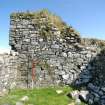


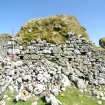



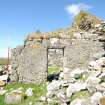
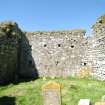






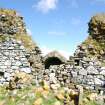
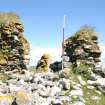
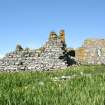


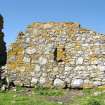



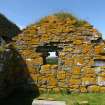

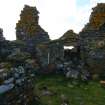







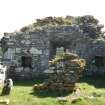






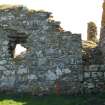

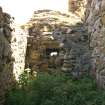
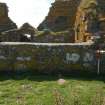


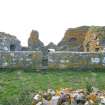


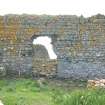




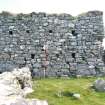




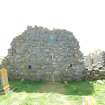

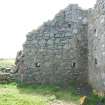




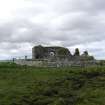



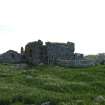
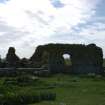
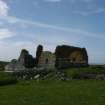





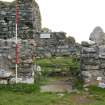




















First 100 images shown.

Archive from historic building survey and archaeological works, Teampull na Trionaid, Cairinis, North Uist, Western Isles
Reports from historic building survey and archaeological works, Teampull na Trionaid, Cairinis, North Uist, Western Isles
Photographs from historic building survey and archaeological works, Teampull na Trionaid, Cairinis, North Uist, Western Isles




